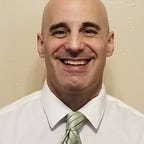How to Curtail Leadership Misconduct
Some executives will eventually and maybe repeatedly reveal character deficiencies, act unethically, prove to be narcissistic and in rarer instances, lead or partake in corrupt practices. A question that organizations and media don’t seem to consistently ask is where all does the responsibility lie for these severe errors, scandal and crisis?
Yes, the individual executive and organization regularly get taken to task when the misconduct is sufficiently exposed. Yet other problems in leadership have to be present for these problems to emerge and rapidly escalate into large and costly trouble.
Boards of directors and human resources seem to escape scrutiny. Are they contributing however to the rot and not being asked to explain? Is the responsibility being shifted elsewhere?
“The blame often falls on the executive team, which may or may not include HR, as HR sources present candidates but it’s the executive team who makes the hiring decision, sometimes against the advice of their HR leads,” says Laura Handrick, contributing HR Professional at Choosing Therapy and owner of an HR & business consulting agency.
Familiarity, likability, trust and delegation in hiring practices is no secret. It doesn’t always prove to be sufficient in accurately identifying the best prospects and helping them stay on ethical track.
“Traditionally, boards hire like-kind executives, abiding by HR recommendations for background checks, or diversity only if the HR lead holds a position high enough in the organization to exert influence,” Handrick says.
Media regularly reports on leadership and organizational misconduct. It’s arguable that society becomes numb to it due to the frequency of occurrences. Even when some executives and organizations are repeat offenders with few and minor consequences, stakeholders don’t seem to bat much of an eye and improvement doesn’t seem to begin.
This can lead an executive and organization to assume what happened was not of a critical nature and clear crisis alarm. Seriousness is lacking.
Damage is being done inside the organization. Doubt and distrust develop, credibility erodes or is thrown away, negative emotions come forth and governance, compliance and risk management are clearly not being competently conducted.
Executive and company reputation is burned inside the organization and at times, also significantly in the media, with regulatory agencies, investors and market.
“Bad leaders cascade bad practices throughout an organization. Shareholders notice. Employees write bad reviews. Today’s bad actors can’t hide from the internet’s transparency,” Handrick says.
The result of this, she says, is “Once a company or brand earns a bad reputation, they have a harder time recruiting top talent and investors. They’ll end up spending ridiculous amounts of money on marketing in an attempt to regain their goodwill.”
When little is done to remedy bad decisions, whether that be in miscalculated hiring or the absence or delay in correction of misconduct, whistleblowing becomes more likely and a very damaging blow when the media, attorneys and law come forth aggressively.
Organizations and well-meaning employees — HR, boards and other executives — can fill the gap ethically to inspire and lead protective and corrective actions. This is beneficial to employees, culture, organization and its name and reputation.
Handrick describes what companies can do to help themselves.
“Larger firms create an ombudsman role to investigate and resolve issues early. Smaller firms typically go through HR or promote open-door leadership for employees to raise issues before they pollute the culture and tarnish the company’s reputation,” she says.
Handrick speaks boldly about what is required if gross misconduct of any kind is truly unwanted and organizations are committed in deeds to ethics, governance, compliance and a healthy, trustworthy culture.
“If you want the nonsense to stop, you have to elevate these roles to have decision-making power on par with other top-tier executives. They can’t be buried layers down in the organization, else they’ll be silenced,” she says.
Michael Toebe is a specialist who helps individuals and organizations accurately evaluate and wisely respond to reputation crisis and scandal. He is the writer of Red Diamonds Essays and Reputation Specialist Essays (both on the Medium platform) and contributes analysis and advisory for: Chief Executive, Corporate Board Member, New York Law Journal, Physicians Practice and Corporate Compliance Insights. He is the voice of the Red Diamonds Podcast.
